Aztec Family Life
We hear a lot about the big stuff, towering pyramids, fierce warriors, bloody sacrifices. But the real heart of the Aztec Empire wasn't a temple, it was the structure of Aztec society. It’s where people worked, ate, raised kids, and basically kept the whole empire running.
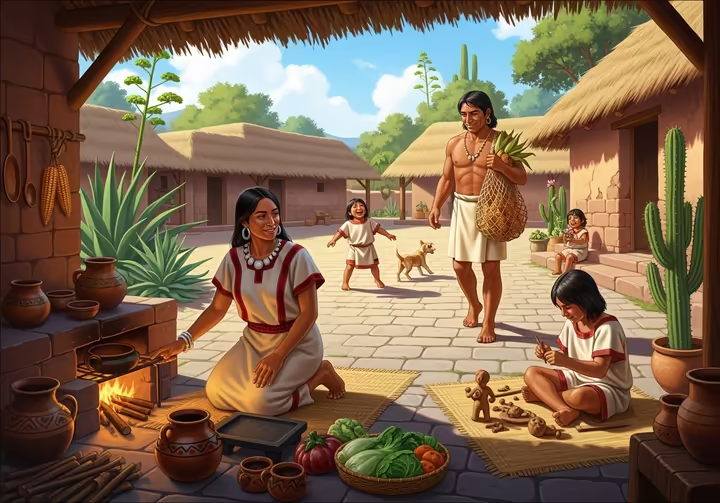
The Household: Your Home and Your People
The Aztecs had a word for the family unit, cenyeliztli , which basically meant "the people living and working together." This group lived in the calli , the physical house. The house itself was just a container- the family inside was the important part.
Your average commoner's house, or xacalli , was pretty simple. It was usually built from adobe (sun-dried mud bricks) on stone foundations, with a thatched or flat roof made of packed earth. Think one big room, no windows, and a dirt floor.
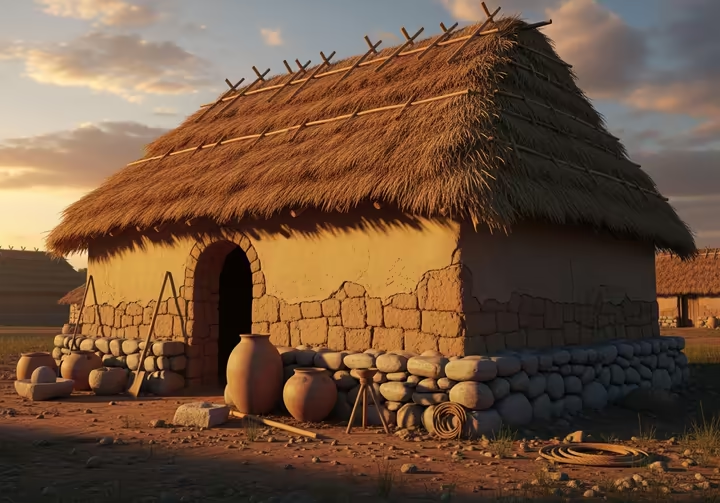
In contrast, nobles lived in larger houses made of carved stone and coated with smooth lime plaster. But every home, rich or poor, had two key spots: a small shrine for gods and ancestors, and the hearth - the fire at the center of everything. Many households also had a separate, igloo-shaped building called a temazcalli , or steam bath, for cleaning up and for rituals.
The Family Compound
Families didn't really live alone. Instead, related families built their homes together, sharing walls and opening onto a central patio. This compound was called a cemithualtia , "those who share a patio."
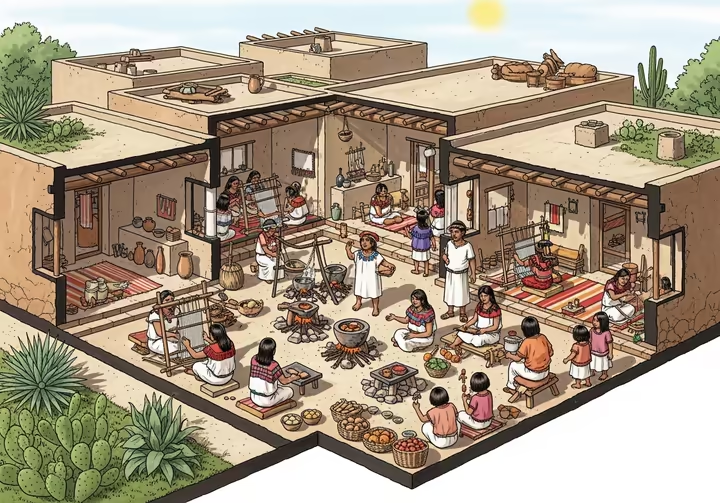
A typical household was a big, multi-generational group living and working as a team. Run by a male patriarch, it could include grandparents, uncles, aunts, and cousins, all pooling their labor. Noble households were even bigger, since noblemen often had many wives and children, which helped increase the family's power and wealth.
Men's Work, Women's Work
Men and women had different jobs, but both were seen as equally vital. You can't run an empire without teamwork, right? Men’s work was mostly outside the home, while women’s work was centered inside it.
A Man's World
For most men, life was all about farming - growing the classic trio of maize, beans, and squash. In the capital, Tenochtitlan, they worked on the famous chinampas . These were man-made islands built from lake mud, so fertile they could produce multiple harvests a year.

Men were also craftsmen, like potters or sandal-makers. Obsidian knappers were especially important, skillfully chipping volcanic glass into razor-sharp blades for tools and weapons. And of course, every man was a potential warrior, since military service was expected of everyone.
A Woman's World
A woman's domain was the household, and her work was non-stop and highly valued. Her biggest job was grinding corn, kneeling for up to six hours a day over a grinding stone called a metate to make dough ( masa ) for tortillas and tamales. This labor fed the entire empire, from priests to warriors.
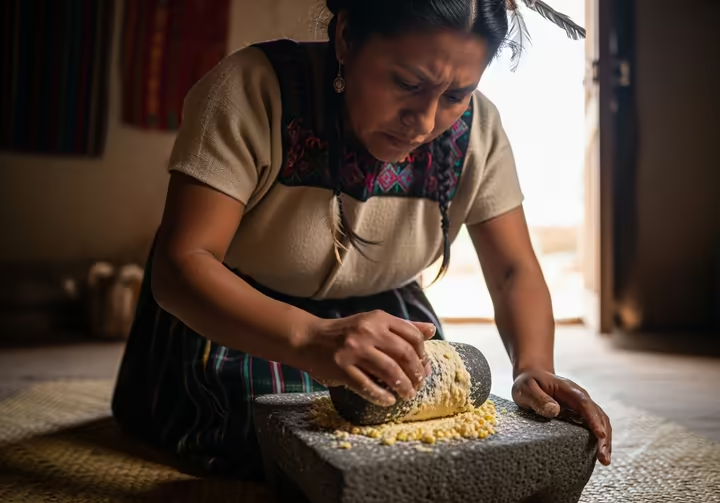
Weaving was also a huge deal. Using a simple backstrap loom, women wove cotton and maguey fibers into cloth. This clothing was a form of currency, a tribute item for the state, and a sign of status.
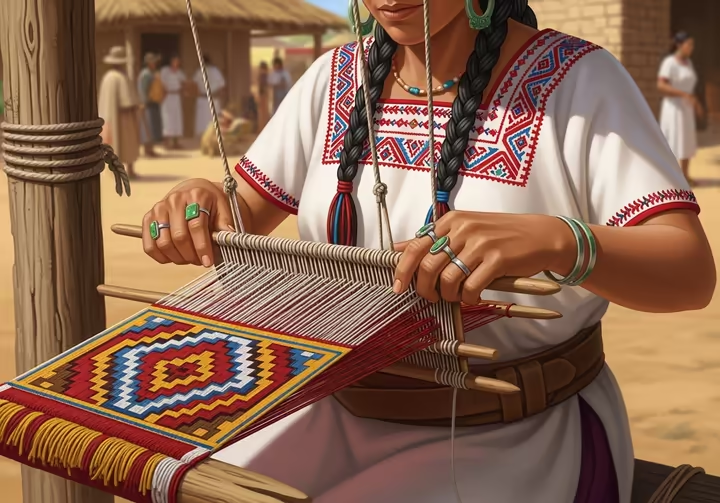
On top of all that, women were the main caregivers for children, managed the household's food and supplies, and acted as family doctors. Many were skilled healers, or ticitl , with a deep knowledge of medicinal herbs.
From Cradle to Grave
An Aztec's life followed a structured path, with rituals marking each stage. It all started at birth, which was seen as a kind of battle. The midwife was like a general, and if a woman died in childbirth, she was honored like a warrior killed in action.
Naming and Destiny
A few days after birth, the family would call a priest called a tonalpouhqui . He would consult the sacred 260-day calendar to read the baby's fate. Your birth date determined your personality and destiny, and you were given a calendar name like "One Reed" or "Five Flower."
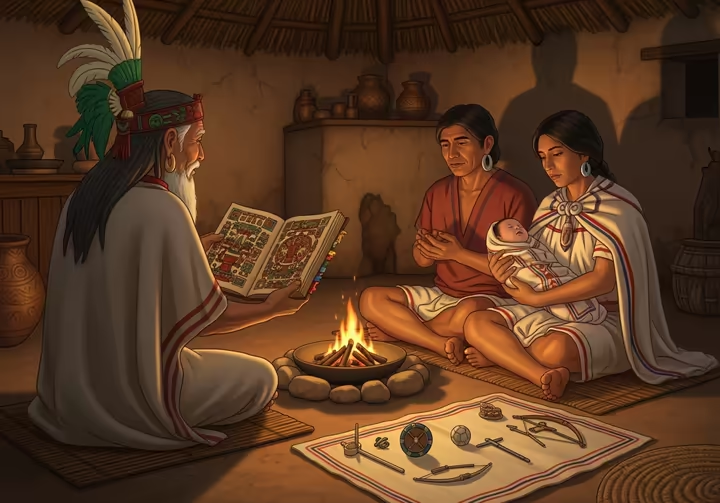
During this ceremony, the baby was also given miniature tools to symbolize their future. Boys got a tiny shield and arrows, while girls got a tiny spindle and broom for weaving and housework.
School Days
Parents were responsible for teaching their children the strict moral code of Aztec society, often using formal speeches called the huehuetlahtolli , or "the sayings of the elders."
Around age 15, formal schooling began. Most boys went to the telpochcalli ("house of youth"), a local school focused on military training and civic duties. Noble kids and gifted commoners attended the calmecac , a tougher school that trained future priests, government officials, and commanders.
Tying the Knot
Marriage wasn't really about romance- it was a contract between families. It was usually arranged when a man was about 20 and a woman was 14 or 15. The groom's family would hire elderly female matchmakers to negotiate the deal.
The wedding ceremony was a big party. The main event happened at night, when the bride was carried to the groom's home. There, the couple would sit by the hearth, and a matchmaker would literally "tie the knot" by binding the groom's cloak to the bride's blouse.
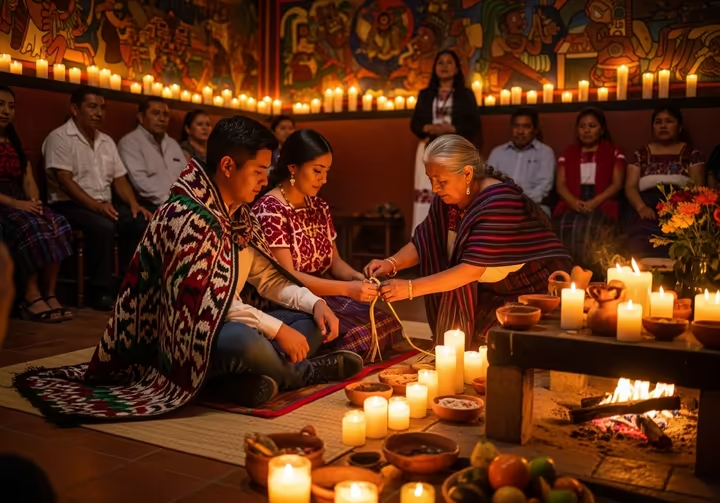
The elderly, or huehuetque , were deeply respected. They weren't seen as a burden but as living libraries of knowledge, history, and wisdom for the family.
The Calpulli: Your Clan and Neighborhood
Families weren't on their own, they were part of a larger group called a calpulli . The name means "large house," and you can think of it as a clan, a district, or a neighborhood. Membership was usually based on kinship, but it could also be based on a shared job, like a guild for featherworkers.
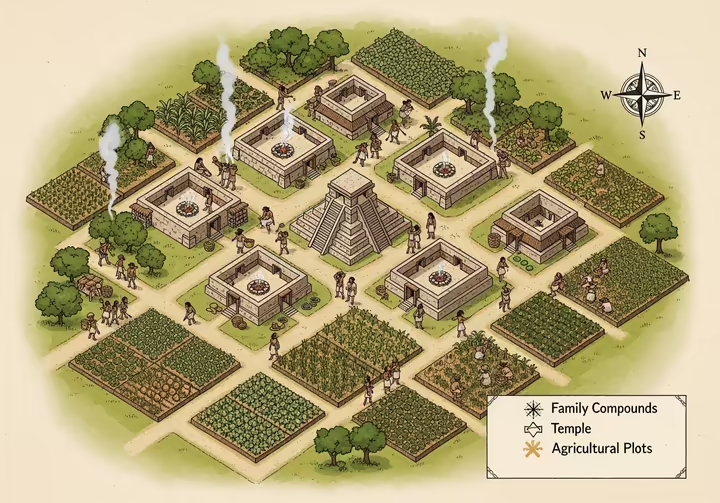
The calpulli was like a mini-state. It had its own land, which it divided among its families, its own local temple and patron god, and its own school. It acted as the middleman between your family and the emperor.
The state taxed the calpulli as a whole, not you directly. The calpulli leaders were responsible for collecting tribute (like cloaks or maize) and providing workers for public projects. When the emperor called for war, men went into battle alongside their brothers and neighbors from their own calpulli .
Rules, Crime, and Divorce
Aztec law was all about keeping society stable, especially the family. Both men and women could own and inherit property. Succession for rulers wasn't automatic, a council of nobles would elect the most capable candidate from the royal family- who could be a brother or nephew of the old ruler.
Adultery was considered one of the worst crimes you could commit. It threatened the alliances between families and messed up inheritance. The punishment was brutal and public- usually death by stoning for both the man and the woman involved.
But they were also realistic about marriage. Divorce was possible, though discouraged. A couple could go to court for reasons like laziness, cruelty, or just not getting along. Women could initiate a divorce and were entitled to half of the couple's property, a recognition of the value of their labor.
Gods in the House
For the Aztecs, the home was a temple, and daily life was filled with spiritual meaning. The most sacred space was the hearth. The three stones of the cooking fire were a direct symbol of three stars the gods placed in the sky at the beginning of time.
So, every time a woman lit the fire to make tortillas, she was re-enacting the creation of the cosmos. Everyday chores became sacred rituals. A woman might blow on corn kernels before cooking them, a small prayer to the maize god so the corn wouldn't fear the fire.
Weaving was another powerful symbol of creation. The back-and-forth movement of the loom mirrored the rhythm of the cosmos, turning chaotic fibers into an ordered textile. The loom was the woman's battlefield, where she brought order from chaos, just as a warrior did in combat.
Ultimately, the family itself was a sacred chain, a "rope of people" ( tlacamecayotl ) connecting the past to the future. Honoring ancestors was a key part of family life. In a world they saw as unstable, the family was the place where order was maintained- one tortilla, one thread, and one generation at a time.